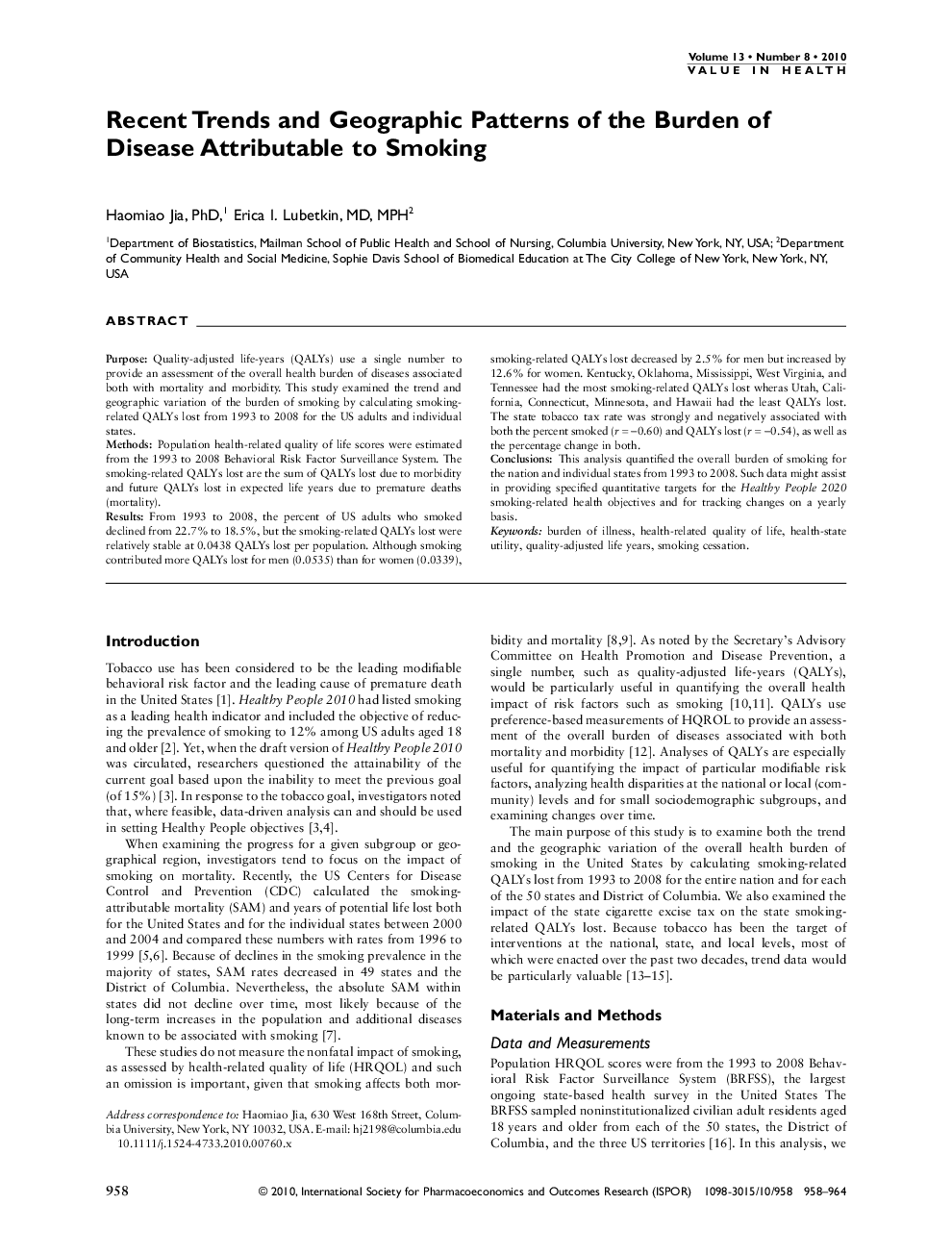| Article ID | Journal | Published Year | Pages | File Type |
|---|---|---|---|---|
| 988805 | Value in Health | 2010 | 7 Pages |
PurposeQuality-adjusted life-years (QALYs) use a single number to provide an assessment of the overall health burden of diseases associated both with mortality and morbidity. This study examined the trend and geographic variation of the burden of smoking by calculating smoking-related QALYs lost from 1993 to 2008 for the US adults and individual states.MethodsPopulation health-related quality of life scores were estimated from the 1993 to 2008 Behavioral Risk Factor Surveillance System. The smoking-related QALYs lost are the sum of QALYs lost due to morbidity and future QALYs lost in expected life years due to premature deaths (mortality).ResultsFrom 1993 to 2008, the percent of US adults who smoked declined from 22.7% to 18.5%, but the smoking-related QALYs lost were relatively stable at 0.0438 QALYs lost per population. Although smoking contributed more QALYs lost for men (0.0535) than for women (0.0339), smoking-related QALYs lost decreased by 2.5% for men but increased by 12.6% for women. Kentucky, Oklahoma, Mississippi, West Virginia, and Tennessee had the most smoking-related QALYs lost wheras Utah, California, Connecticut, Minnesota, and Hawaii had the least QALYs lost. The state tobacco tax rate was strongly and negatively associated with both the percent smoked (r = −0.60) and QALYs lost (r = −0.54), as well as the percentage change in both.ConclusionsThis analysis quantified the overall burden of smoking for the nation and individual states from 1993 to 2008. Such data might assist in providing specified quantitative targets for the Healthy People 2020 smoking-related health objectives and for tracking changes on a yearly basis.
